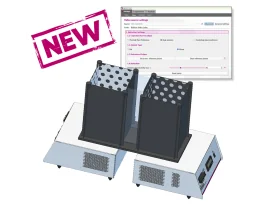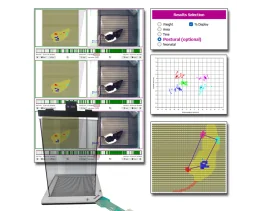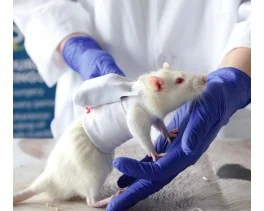Authors
F. Treguer, E. Donal, S. Tamareille, N. Ghaboura, G. Derumeaux et al.
Lab
Faculté de Médecine, Protection et Remodelage du Myocarde, Angers, France.
Journal
Heart and Circulatory Physiology
Abstract
A noninvasive assessment of infarct size and transmural extension of myocardial infarction (TEMI) is fundamental in experimental models of ischemia-reperfusion. Conventional echocardiography parameters are limited in this purpose. This study was designed to examine whether speckle tracking imaging can be used in a rat model of ischemia-reperfusion to accurately detect the reduction of infarct size and TEMI induced by erythropoietin (EPO) as early as 24 h after reperfusion. Rats were randomly assigned to one of three groups: myocardial infarction (MI)-control group, 45 min ischemia followed by 24 h of reperfusion; MI-EPO group, similar surgery with a single bolus of EPO administered at the onset of reperfusion; and sham-operated group. Short-axis two-dimensional echocardiography was performed after reperfusion. Global radial (GS(r)) and circumferential (GS(cir)) strains were compared with infarct size and TEMI assessed after triphenyltetrazolium chloride staining. As a result, ejection fraction, shortening fraction, GS(r), and GS(cir) significantly correlated to infarct size, whereas only GS(r) and GS(cir) significantly correlated to TEMI. EPO significantly decreased infarct size (30.8 + or - 3.5 vs. 56.2 + or - 5.7% in MI-control, P < 0.001) and TEMI (0.37 + or - 0.05 vs. 0.77 + or - 0.05 in MI-control, P < 0.001). None of the conventional echocardiography parameters was significantly different between the MI-EPO and MI-control groups, whereas GS(r) was significantly higher in the MI-EPO group (29.1 + or - 4.7 vs. 16.4 + or - 3.3% in MI-control; P < 0.05). Furthermore, GS(cir) and GS(r) appeared to be the best parameters to identify a TEMI >0.75 24 h after reperfusion. In conclusion, these findings demonstrate the usefulness of speckle tracking imaging in the early evaluation of a cardioprotective strategy in a rat model of ischemia-reperfusion.
Source :

 Douleur - Allodynie/Hyperalgésie Thermique
Douleur - Allodynie/Hyperalgésie Thermique Douleur - Spontanée - Déficit de Posture
Douleur - Spontanée - Déficit de Posture Douleur - Allodynie/Hyperalgésie Mécanique
Douleur - Allodynie/Hyperalgésie Mécanique Apprentissage/Mémoire - Attention - Addiction
Apprentissage/Mémoire - Attention - Addiction Physiologie & Recherche Respiratoire
Physiologie & Recherche Respiratoire




































 Douleur
Douleur Système Nerveux Central (SNC)
Système Nerveux Central (SNC)  Neurodégénérescence
Neurodégénérescence Système sensoriel
Système sensoriel Système moteur
Système moteur Troubles de l'humeur
Troubles de l'humeur Autres pathologies
Autres pathologies Système musculaire
Système musculaire Articulations
Articulations Métabolisme
Métabolisme Thématiques transversales
Thématiques transversales Congrès & Meetings
Congrès & Meetings